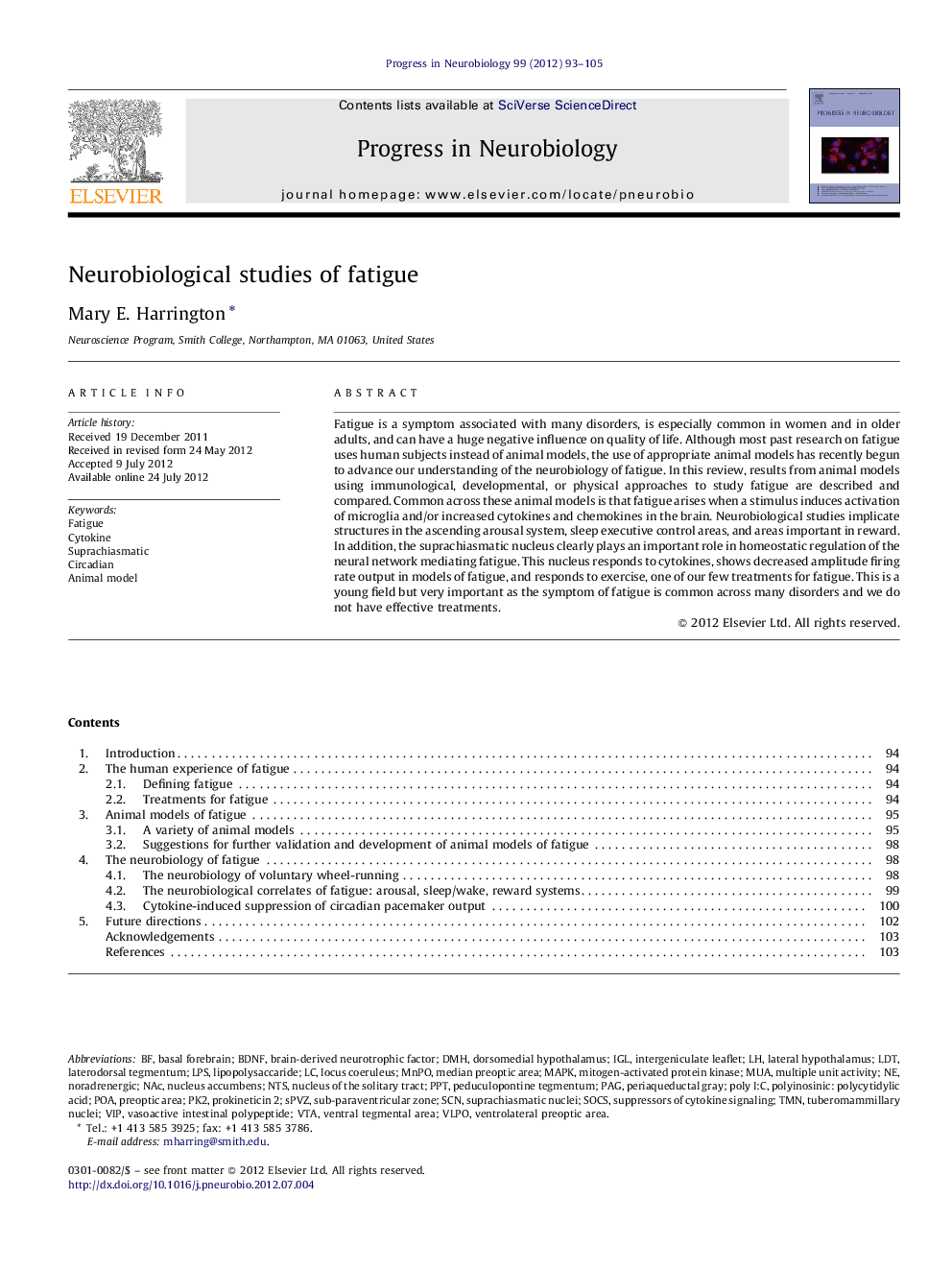| Article ID | Journal | Published Year | Pages | File Type |
|---|---|---|---|---|
| 4353418 | Progress in Neurobiology | 2012 | 13 Pages |
Fatigue is a symptom associated with many disorders, is especially common in women and in older adults, and can have a huge negative influence on quality of life. Although most past research on fatigue uses human subjects instead of animal models, the use of appropriate animal models has recently begun to advance our understanding of the neurobiology of fatigue. In this review, results from animal models using immunological, developmental, or physical approaches to study fatigue are described and compared. Common across these animal models is that fatigue arises when a stimulus induces activation of microglia and/or increased cytokines and chemokines in the brain. Neurobiological studies implicate structures in the ascending arousal system, sleep executive control areas, and areas important in reward. In addition, the suprachiasmatic nucleus clearly plays an important role in homeostatic regulation of the neural network mediating fatigue. This nucleus responds to cytokines, shows decreased amplitude firing rate output in models of fatigue, and responds to exercise, one of our few treatments for fatigue. This is a young field but very important as the symptom of fatigue is common across many disorders and we do not have effective treatments.
► Fatigue is a common symptom of many disorders but with few effective treatments. ► Fatigue can be studied with animal models. ► Activation of brain microglia or increased cytokines is associated with fatigue. ► The neural network includes regions for arousal, sleep, reward, and circadian rhythms. ► Research on neural targets may allow development of novel treatments for fatigue.
